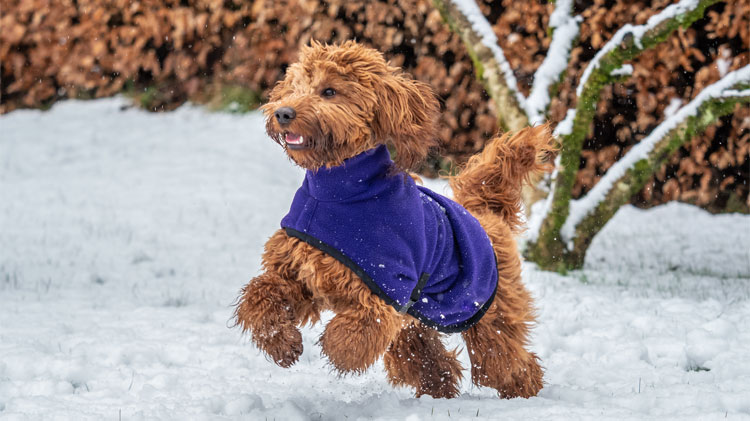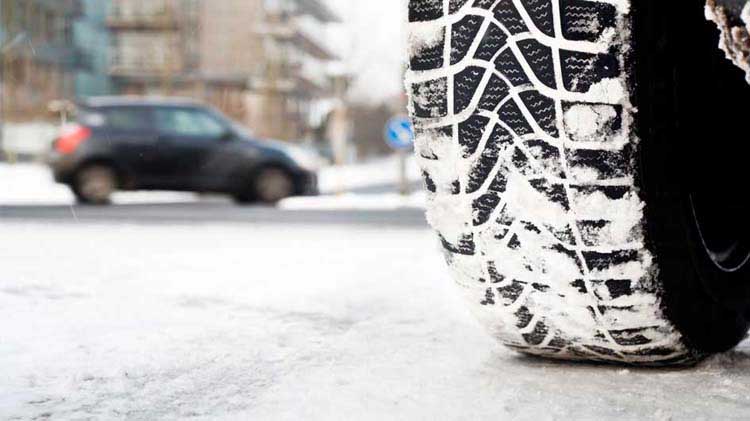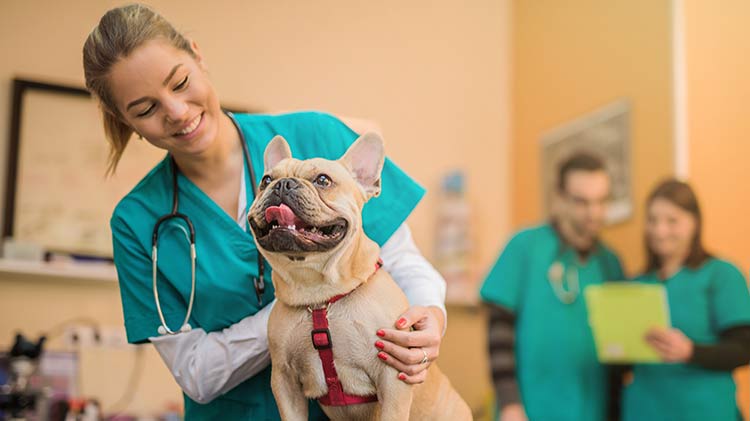Winter pet safety tips
Winter and the cooler temperatures can put our pets at risk. Learn how to help your furry family member brave the winter with these cold weather tips for pets.
As temperatures drop and snow starts to fall, many of us may choose to hibernate indoors and enjoy the warmth of blankets and hot chocolate. But for dog parents, we have no choice but to venture outside and face the frigid cold alongside our canine companions. Rain or shine, dogs still need potty breaks, and winter can transform the outside world into a brand new playground for our four-legged friends.
Before you head outside and frolic in the snow or take your dog for a chilly walk, here are some cold weather pet safety tips that’ll help keep your best friend happy and healthy all winter long.
How cold is too cold?
All pets are different, and some will tolerate the cold better than others. Siberian huskies and great Pyrenees, for example, were bred to withstand even the chilliest of temperatures and seem to come alive at the sight of snow. Your pet’s size, weight, age, health and coat will influence whether they turn into Balto or a pupsicle come winter time. But a good rule of thumb is that if it’s too cold for you, it’s probably too cold for your pet.
For the most part, just pay attention. Your pet will usually let you know if they’re not having a good time outside in the cold, but here are some signs that it might be time to bring your pet inside:
- Shivering
- Lethargy
- Whining
- Lifting or holding paws off the ground
- Pale gums
- Limping
In extreme cases, hypothermia is possible. Signs include prolonged lethargy, shivering that won’t stop, stumbling, and even loss of consciousness. If you notice any of these signs, you should seek veterinary treatment immediately.
Limit time outside
It's not always a matter of what’s too cold, but how long your pet is exposed to the cold. A quick bathroom break likely won’t harm your pet, but during the winter, your pet should be spending the majority of the season inside with you. You should never keep your dog tied up outside during the winter months, and outdoor cats should be brought inside. Cats along with small, sick and short-haired dogs are more at risk of getting too cold and may require extra care.
Keep your pet's paws protected
The cold can be a real pain in the paw — literally. Walking dogs in cold weather can be dangerous at times, but you can still enjoy your daily walks as long as you stay vigilant about protecting your dog’s paws. Snow and ice can cause cracked, bleeding paws if you’re not careful, so make sure to look for any signs of irritation when you get home.
You should also wash and completely dry your pet’s paws after being outside, especially if they came in contact with any salt, antifreeze or chemical deicer — all of which are poisonous to pets. If a pet merely walks through a puddle of antifreeze and later licks their paws, it can be lethal. Often confused for water, this sweet-smelling hazard can be deadly if not immediately addressed. If you believe your pet has ingested any amount of antifreeze, seek the medical care of your veterinarian. Last winter, Trupanion paid over $1.5 million dollars in claims related to accidental ingestions.1 As an extra precaution, consider using pet-friendly, non-toxic products during the winter such as antifreeze that contains propylene glycol — instead of the highly toxic ethylene glycol.
Massaging petroleum jelly into your pet’s paw pads is a safe, easy way to protect their paws. Booties provide even better coverage and can help keep your pet’s paws warm and protected from snow, salt and hazardous chemicals. Winter conditions can be harsh on our pets, so keeping your home humidified can also help prevent dry, itchy and irritated skin.
Bundle up and stay dry to help keep your pet warm
Many of us might buy a new coat to prepare for winter, but don’t forget to buy a new coat for your pet, too! If you plan to spend time outdoors this winter season, make sure your pet is dressed properly for the weather. Not only will a jacket, vest or sweater help keep your pet warm from the cold, they’ll also be the cutest and most stylish pet in the neighborhood. Win-win!
Keep in mind that not all outdoor clothes work for all scenarios. If your pet is going out into the snow, for example, a water-resistant jacket with a warm lining will be much more effective than a knit sweater that soaks up and holds moisture. A wet doggie sweater won’t keep your pet warm and will have the opposite effect.
Making sure your pet stays dry is a crucial part of keeping them warm. As fun as it might be for your pet to roll around in the snow, this can also lead to wet fur and clothing very quickly. Always dry your pet off completely when they come inside, and don’t let them stay outside with a wet garment.
Winter car safety
Pet parents should always be mindful when traveling with their pet. Car safety is important during all times of the year and winter is no exception. You’re more likely to encounter additional hazards on the road like ice and snow during the winter, so whenever traveling with your pet in the car, make sure to secure your pet with a crate or harness. It's also always a good idea to keep an emergency kit in the car for any situations that might arise.
Just as you shouldn’t leave your pet alone in a hot car during the summertime, you also shouldn’t leave your pet unattended in a car during the winter. Cars hold in the cold the same way that refrigerators do, so temperatures can drop very quickly as soon as the engine turns off. When in doubt, simply leave your pet at home.
As for our feline friends, outdoor cats may find the engine block under the warm hood of your car to be a great spot to snooze during the winter. Before you start your car in the morning, remember to bang on the hood a little to wake up any sleeping cats or critters.
Whether your pet likes to romp around in the snow, eat it or avoid the cold all-together, the unexpected can happen. If your pet becomes sick or injured, your furry family member deserves the best medical care. Consider how pet medical insurance can be there for your pet when they need it most.
Learn how a pet insurance policy can be there throughout your pet's lifetime.
Terms and conditions do apply. We love informed decisions. See the Trupanion policy for full coverage details.
1Return to reference Based on internal Trupanion data.




